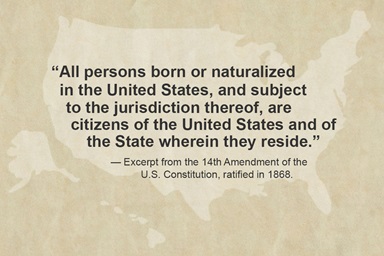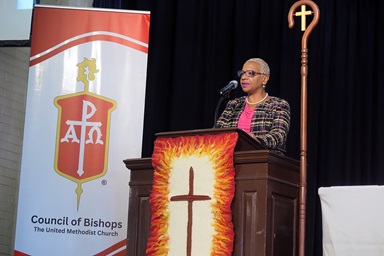After all the hours of praying, planning and debating, the question remains: Will restructuring the denomination's general agencies save The United Methodist Church money?
The answer is yes - but the reality is that it may not be enough to be felt by local churches. The further reality is that the money involved is not a major portion of church spending.
The Call to Action Interim Operations Team has proposed the consolidation of nine agencies as part of an overall effort to increase the number of vital congregations.
"The average jurisdictional annual (regional) conference might see a reduction in apportionments totaling $72,640 to $108,960 over the next four years," said Moses Kumar, top executive of the General Council on Finance and Administration, the denomination's finance agency. "For an average local church in the United States, the savings might range from $120 to $180 over that same four-year period."
The actual amount of savings for an individual conference or local church would vary depending on the size of its respective apportionments, he said.
The proposed agency reconfiguration has prompted support and criticism across the denomination as well as alternative proposals and suggestions. The 2012 General Conference, the denomination's top lawmaking body, will have final say on restructuring proposals and the general church budget when it meets April 24-May 4 in Tampa, Fla.
Putting a precise number to the savings from the proposed merger is difficult. The finance agency and a lawyer assisting the Interim Operations Team differ significantly on the potential legal costs associated with the proposal.
No one disputes that savings would result from fewer people traveling to fewer meetings.
Financial challenge bigger than agencies
Regardless of which estimate is correct, another reality is that general church funds - the funds that go to support the general agencies - are not a main driver of church expenditures in the United States. The vast majority of church offerings remain with the local congregation.
About 2 cents of every dollar given at the local church goes to support general church funds. A $1 million reduction in the general church budget translates to only about $30 savings per local church over a four-year period, Kumar said.
By comparison, the United Methodist Board of Pension and Health Benefits said about 3.7 percent of local church expenditures went to active clergy and staff health benefits in 2008. That same year an additional 4.3 percent of local church dollars went to active clergy pension, death and disability benefits; to retired clergy health benefits, and the Pre-82 pension plan.
Potential costs and savings of Interim Operations Team plan
Potential meeting costs for the Center for Connectional Ministry and Mission (15 members)
- 3 meetings in 2012 after General Conference: $92,500
- 4 meetings per year for 2013-16 quadrennium: $535,000
Potential meeting costs for the General Council for Strategy and Oversight (45 members)
- 1 meeting in 2012 after General Conference: $92,500
- 1meeting per year for 2013-2016 quadrennium: $402,500
Potential meeting cost savings from dissolution of the boards of 10 general church entities (Connectional Table and these general agencies - General Council on Finance and Administration, Board of Church and Society, Board of Discipleship, Board of Global Ministries, Board of Higher Education and Ministry, Commission on Archives and History, Commission on Communication, Commission on the Status and Role of Women, and the Commission on Religion and Race):
- 2 meetings per year for the 2013-2016 quadrennium: $9 million
Potential legal costs to dissolve the current 10 general church entities and create new entities:
- $2 million to $3 million depending on the complexity of the legal issues encountered, including title issues on owned properties.
Potential costs for executive general secretary and administrative assistant for the Center for Connectional Mission and Ministry:
- 4th quarter of 2012: $80,000
- 2013-2016 quadrennium: $1,350,000
The council's estimates appear with the legislation in the Advance Daily Christian Advocate (page 949-950)
Local churches in the United States also face other financial pressures including the rising cost of utilities, aging buildings and weekly attendance that no longer matches the numbers on their membership rolls.
With these concerns in mind, the finance agency has recommended to the 2012 General Conference a $603.1 million budget for seven general church funds, which represents a 6.04 percent reduction from the budget approved by the 2008 General Conference. Those funds support general agency work, the bishops, ministerial education, ecumenical work, Africa University and the Black College Fund.
A main challenge for the denomination as a whole is that while its global membership is growing - particularly in Africa - its financial base in the United States is shrinking. The denomination has about 13 million baptized and professed members worldwide. However, U.S. membership dropped by more than 108,000 people between 2009 and 2010 to 7.57 million members, the General Council on Finance and Administration recently reported.
The Rev. Lovett H. Weems Jr., director of the Lewis Center for Church Leadership at Wesley Theological Seminary in Washington, warns that U.S. membership losses are likely to accelerate dramatically as baby boomer United Methodists grow older and eventually depart this earth.
"(After 2018) is a death tsunami in the United States that has the potential to wipe out the United Methodist witness in vast parts of entire states," Weems told the denomination's Financial Leadership Forum in 2011 in a speech posted on the Call to Action website. "There will be more deaths and a higher death rate than at any time in U.S. history since the introduction of antibiotics."
The challenges restructuring addresses
The Council of Bishops and Connectional Table, which coordinates the denomination's ministry and resources, launched the Call to Action in 2009 in the wake of the 2008 economic crisis. That initiative led to the Interim Operations Team's work.
"Contributing factors, which led to the (Call to Action) study, included the worldwide economic crisis; and in the United States the four-decade decline in membership; an aging and predominantly Anglo constituency; declines in worship attendance, professions of faith and baptisms; difficulty in attracting 'young' generations; and other trends around clergy health and job satisfaction," said East Ohio Area Bishop John Hopkins, chair of the Connectional Table and Interim Operations Team member.
But saving money was never the main goal of the Call to Action, said Illinois Area Bishop Gregory V. Palmer, the team's convener and a leader throughout the Call to Action process.
"The principal reasons were always to help us have a more aligned and nimble system for resourcing what ultimately came out as the adaptive challenge (to increase the number of vital congregations)," Palmer said. "We thought that we might be able to save some costs. &ellipsis; But that was never our No. 1, 2 or 3 goal."
The plan would merge nine of the denomination's 13 general agencies - including the General Council on Finance and Administration - into a new Center for Connectional Mission and Ministry under a 15-member board. That board, in turn, would answer to a 45-member General Council for Strategy and Oversight that would replace the Connectional Table.
$60 million reallocation not yet addressed
One part of the Interim Operations Team proposal is not included in the finance agency's calculations. It is a proposed redistribution of up to $60 million in general church funds during the next four years. The money is intended for three efforts: providing more theological education outside the United States, developing more young clergy and lay leaders and fostering more vital congregations.
"The $60 million reallocation that has been proposed would shift money, presumably from the general program agencies to the annual conferences and local churches in the central and jurisdictional conferences, with the specific division still to be determined," said Moses Kumar, top executive of the Council on Finance and Administration.
"It is undetermined whether the work eliminated in the general agencies in support of vital congregations would be more effectively done in those local churches and annual conferences."
Basically, the proposal would reduce the costs for more than 500 people attending meetings over four years to the cost of 60 people meeting - 15 who meet four times a year and 45 who meet once. Agency board members are unpaid.
The General Council on Finance and Administration calculated the costs of the restructuring at the request ofthe Connectional Table, which approved and drafted the legislation for the Interim Operations Team plan. The council as part of its duties estimates the costs of General Conference legislation with financial implications when specific enough.
Major points in the council's estimate include:
- Savings of nearly $8 million in meeting costs over the next four years.
- Potential legal costs of approximately $2 million to $3 million for dissolving agencies and establishing two new ones.
- The cost of a new executive general secretary and administrative assistant for the new mega-agency, budgeted at $1.43 million from the last quarter of 2012 through the end of 2016.
- A net savings of $4 million to $6 million for The United Methodist Church over the next four years under the proposed consolidation.
"Any further savings require elimination of work and personnel in the general agencies receiving general church funds, with associated severance costs for staff released," Kumar said.
According to the council, the actual legal costs of the agency consolidation would vary based on which real estate assets are purchased or sold, the various corporations dissolved and formed and assets retitled. Complicating matters, both the United Methodist Board of Global Ministries and the Board of Higher Education and Ministry - among the agencies to be consolidated under the proposal - have assets outside the United States.
Richard F. Warren - a corporate lawyer with the firm Bradley Arant Boult Cummings in Nashville, Tenn. - said he thinks the merger of agencies and replacement of the Connectional Table could be done far more quickly and cheaply. He puts the price tag in the range of $100,000 to $200,000.
"There are different ways from a legal standpoint that you can accomplish the same thing," he said to explain the wide divergence in estimates. Warren, who has advised United Methodist agencies before, performed a preliminary review for the Interim Operations Team of the legal costs involved in the merger.
Instead of dissolving the nine agencies and transferring their assets one at a time, Warren recommends simply merging those nine agencies into the new Center for Connectional Mission and Ministry at once. "If you do that, then you don't have to transfer individual assets," he said. "The phrase we lawyers use is that 'assets are transferred by operation of law,' so you don't for instance have to deed over real estate and things like that."
The finance agency has not yet developed cost estimates for the other two alternative restructuring plans - "A New UM Administrative Order" by the unofficial progressive caucus Methodist Federation for Social Action, and "UMC Plan B" by an ad hoc group of church leaders.
*Hahn is a multimedia news reporter for United Methodist News Service.
News media contact: Heather Hahn, Nashville, Tenn., (615) 742-5470 [email protected].
Like what you're reading? Support the ministry of UM News! Your support ensures the latest denominational news, dynamic stories and informative articles will continue to connect our global community. Make a tax-deductible donation at ResourceUMC.org/GiveUMCom.




